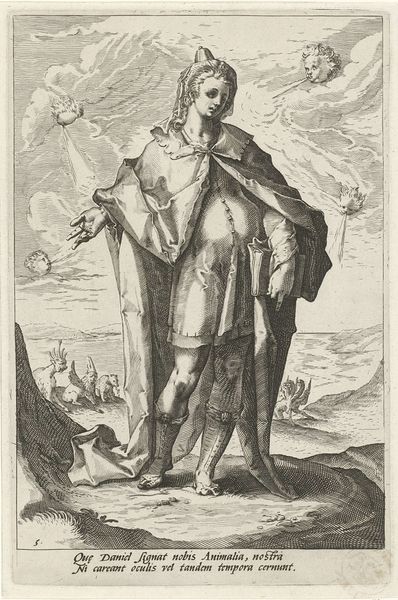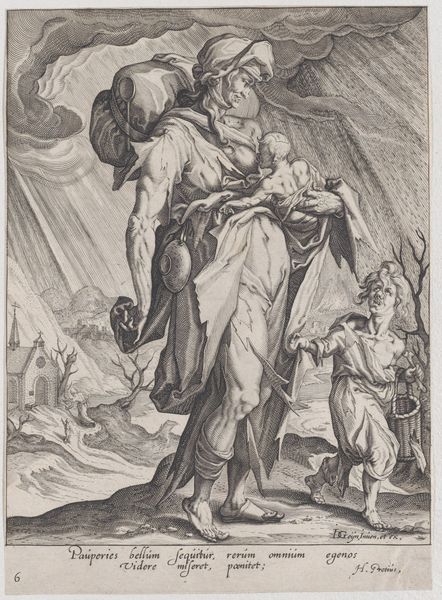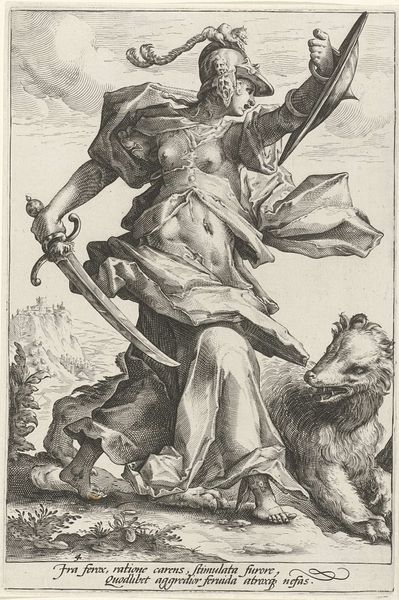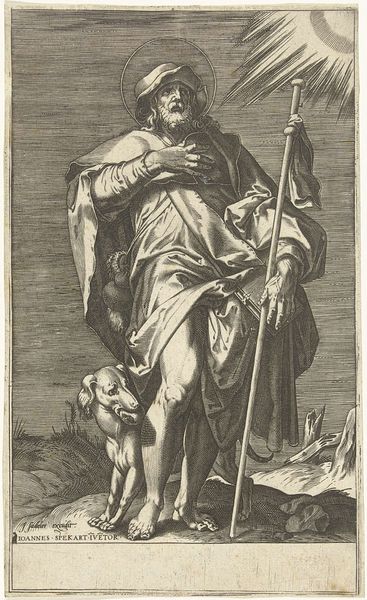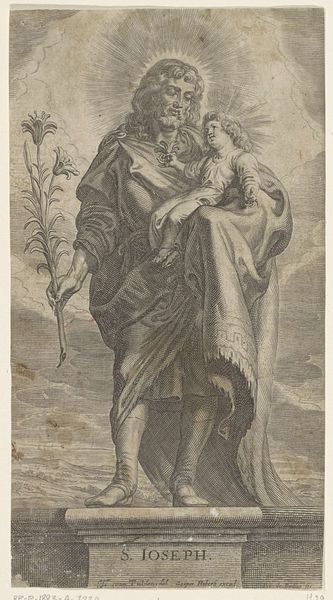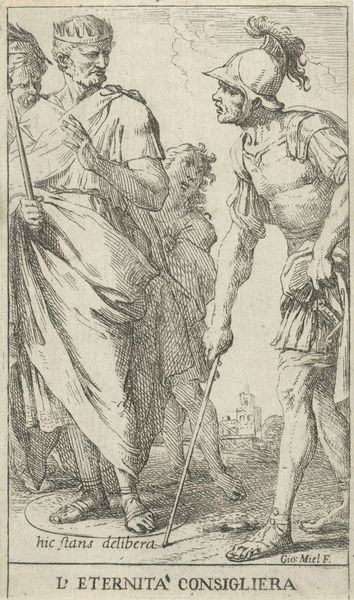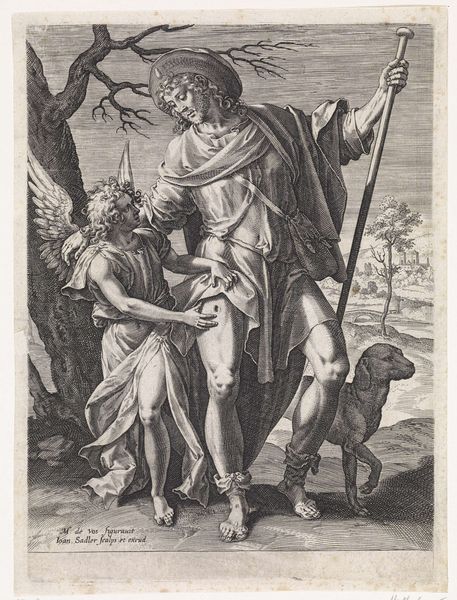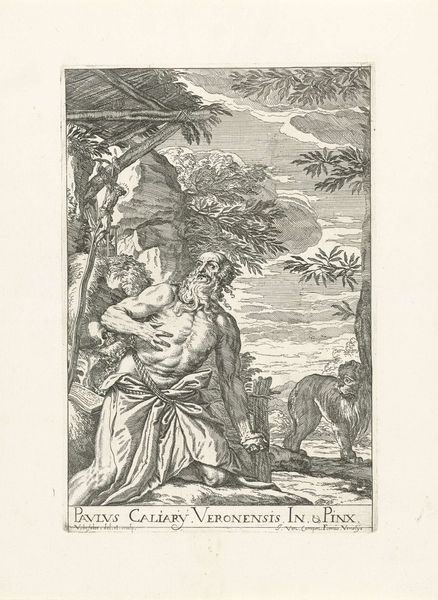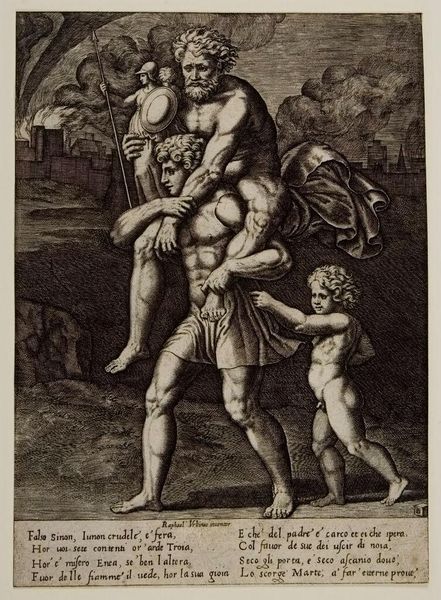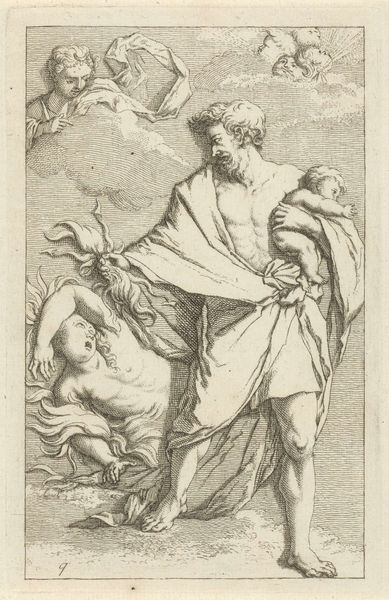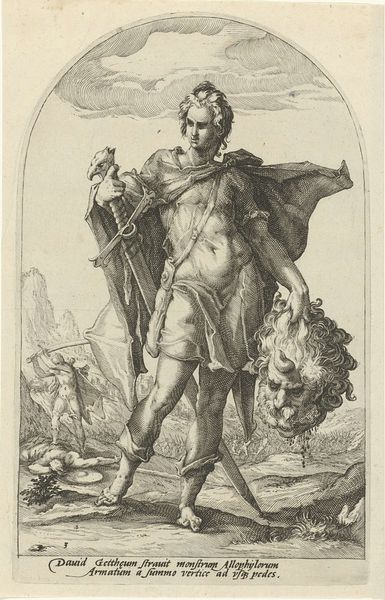
print, engraving
#
allegory
# print
#
old engraving style
#
mannerism
#
figuration
#
engraving
Dimensions: height 216 mm, width 144 mm
Copyright: Rijks Museum: Open Domain
Curator: Looking at this engraving, I immediately feel the weight of greed. There’s such a burdened quality to the central figure. Editor: Indeed. What we have here is “Avarice,” an engraving crafted between 1585 and 1589 by Jacob Matham, now housed in the Rijksmuseum. It is very much a product of its time, saturated in Mannerist style. Curator: The textures are incredibly detailed; you can almost feel the rough cloth of the figure’s garments, even the cool hardness of the metal tools he clutches. What I find fascinating is how the artist used the engraving process to highlight this. It really drives home a focus on material possessions, quite literally weighing down this avaricious character. Editor: Absolutely. We should remember the power these prints had during the late 16th century. Prints made art accessible in a way that painting never could, democratizing imagery. Avarice here wasn’t just a moral failing; it became a publicly disseminated idea, reinforced and performed in social contexts shaped by institutions. Curator: Notice the landscape setting, it seems almost secondary to the central figure, but there are still elements within it. Like the ruined castle on the hillside. Symbolism that shows what ultimately becomes of hoarded possessions. Editor: Yes, there's this looming sense of inevitable decay, despite the apparent riches. And the Latin inscription—which translates roughly to "Lost Avarice, overwhelmed by coffers, always poor, though rich beyond measure," it reinforces that. How this print participates in shaping cultural attitudes toward wealth and poverty is telling, even today. Curator: The detail, when considering the limitations of the tools available for this period, showcases a profound understanding of the materials Matham had. I like how we can appreciate and still analyze it hundreds of years later. Editor: It makes you wonder about the power this image might have held for people navigating shifting economic tides then. To witness art operating as both social commentary and cultural reinforcement is precisely why history holds its value.
Comments
rijksmuseum about 2 years ago
⋮
Avaritia, or Greed, was widely perceived as the worst of the Seven Deadly Sins, since the desire for money was the root of all evil. This personification of Avarice (with her attribute, the toad) seems not to have any idea what she needs money for. Wealth has become a burden – a weight to be carried in bags strapped to her chest.
Join the conversation
Join millions of artists and users on Artera today and experience the ultimate creative platform.
